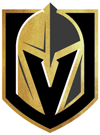If you are involved in a traffic accident anywhere in Nevada, the investigating agency will write a traffic accident report, sometimes called an SR-1 or a traffic collision report. This is the report filled out by the police officer or highway patrol officer who responds to the accident and is what the insurance company reviews to determine who was at fault when approving a claim.
It is also what your attorney will need if your claim is denied, or if it is necessary to bring a lawsuit against the other driver or the insurance company in court. Understanding what is in the report and what the sections mean can be critical in making your case.
START YOUR FREE CONSULTATION
NO FEES UNLESS WE WIN!
Call (702) 382-0000 for a free consultation
Vehicle Information Sheet
The first two pages of the report contain the event number, accident number, and agency name. These are the identifying numbers issued by the police agency when the accident is called in and will be used to identify the case by the department. This number may not be the one issued by the insurance company for their records.
The vehicle action section describes the officer’s initial impression of the scene, the direction of travel, whether the vehicle was turning or changing lanes, whether it was stopped in the traffic lane, and who the officer believed to be at fault based on first viewing the scene.
The driver information section includes all information about the driver of the vehicle. It will have the driver’s contact information and driver’s license number, whether a field sobriety test was administered, whether the investigator believed the driver was impaired, and any injuries suffered by the driver.
The vehicle information section has not only the year, make, and model of the vehicle, the license plate, and VIN, but also insurance information, any damage seen by the investigator at the scene, and actions made by the driver that may have contributed to or caused the accident. It will also include information on the traffic signals, signs, estimated speed of the vehicle, and whether the driver received a citation.
The back page will contain contact information for any passengers, witnesses, and whether the vehicle was a commercial vehicle, such as a bus or a truck. If there are two vehicles involved, one face page will be written for each vehicle.
Scene Information Sheet
The next two pages contain the date, time, and location of the accident, including the time of day (i.e., morning or afternoon), weather conditions, lighting conditions (sunny, cloudy, windy), and roadway conditions.
If there was any non-vehicle damage, such as damage to a fence or guardrail, the type of damage is given on this sheet, as well as the name of the owner and the owner’s contact information.
The remainder of the sheet contains the investigator’s written narrative, and a diagram of the accident showing each vehicle as seen at the time of the accident.
You should carefully review the officer’s report to make sure it matches your recollection of the accident. Traffic officers investigate many accidents every day, and mistakes happen. It can be critical to your case if the traffic report says you were traveling north when you were actually traveling west at sunset and the sun was in your eyes.
Also review the narrative for any details that were not covered in the checkbox portion of the report, including statements made by other parties on the scene, or specific impressions of the scene or other driver.
Non-Motorist Information Sheet
If the accident involved a non-motorist, such as a pedestrian, a bicycle, or an off-road vehicle, this sheet will be used. The information sheet is the same, with a few minor differences.
There will be a section to describe the non-motorist’s condition, such as whether they were intoxicated, jaywalking, or whether safety equipment was present. Factors like failure to yield the right of way (if on a bike or motorized scooter), walking in the roadway, or lack of reflective clothing will also be noted.
A section about roadway conditions will contain notes about whether there was a bike lane or bike path and whether it was marked or separated from the road.
Occupant/Witness Supplement
This sheet is included if there are additional occupants of any vehicles, other witnesses, owners of damaged property, or other people of interest.
The officer’s name, their ID or badge number, the date of the report, the name of the reviewing officer, and the date of the review must appear at the bottom of all pages, as well as the number of total pages (1 of __). This way, if the officer must be contacted or subpoenaed, he or she can be located easily by you or your attorney.
If you have such a report and have any questions about what it means for your accident or your insurance claim, contact Adam S. Kutner, Injury Attorneys at [phone-number] for a free consultation regarding your case. We specialize in vehicle and personal injury accidents in the southern Nevada area and are available to help you resolve your accident claim today.
Call (702) 382-0000 for a free consultation
Adam S. Kutner is a top 100 trial lawyer with 33 years’ experience and expertise that will benefit you
Call us at (702) 382-0000 anytime to schedule a free consultation. We will work to get you the maximum settlement as quickly as possible so you can move forward on your healing journey.
START YOUR FREE CONSULTATION
NO FEES UNLESS WE WIN!
Home visits are available
Call now for details
SE HABLA ESPAÑOL

Adam S. Kutner
PERSONAL INJURY LAWYER
With more than 33 years of experience fighting for victims of personal injury in the Las Vegas Valley, attorney Adam S. Kutner knows his way around the Nevada court system and how to get clients their settlement promptly and trouble-free.














